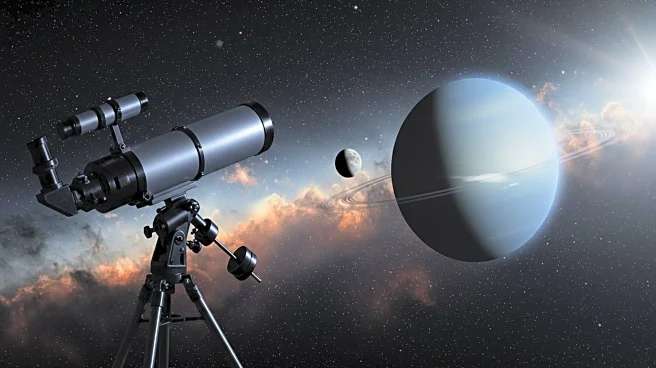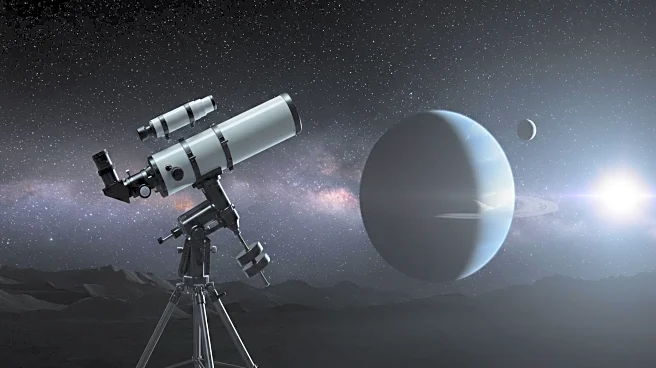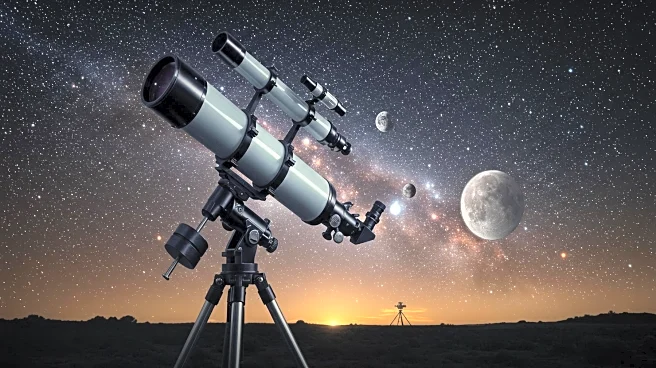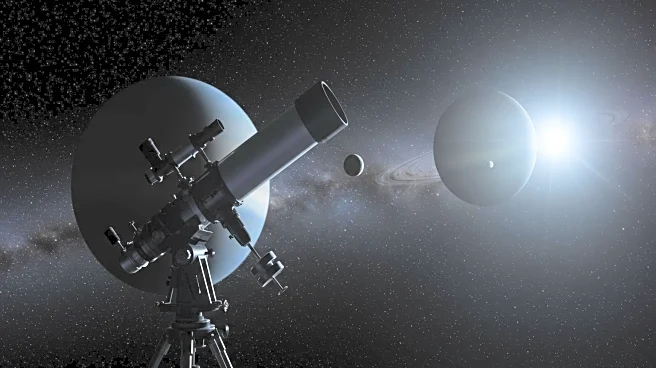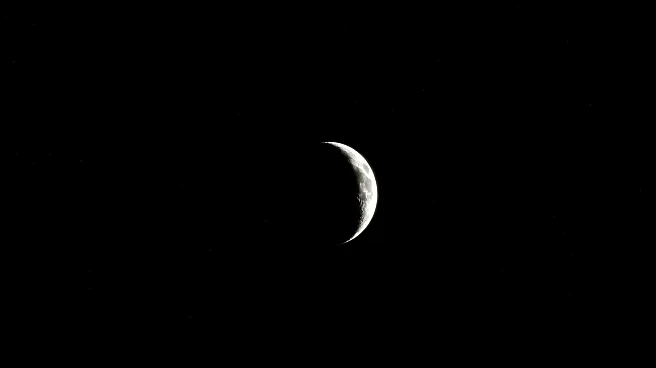What's Happening?
Astronomers have identified a new moon orbiting Uranus, increasing the planet's known satellites to 29. The discovery was made using NASA's James Webb Space Telescope (JWST), which captured images of the moon, provisionally named S/2025 U1, using its NIRCam. The moon is estimated to be 10 kilometers in diameter and orbits Uranus between the orbits of Ophelia and Bianca. This discovery highlights the advanced capabilities of JWST in detecting smaller celestial bodies, surpassing previous missions like Voyager 2. The moon was spotted in a series of ten 40-minute long-exposure images, according to Maryame El Moutamid, a lead scientist at the Southwest Research Institute.
Why It's Important?
The discovery of S/2025 U1 underscores the enhanced capabilities of the James Webb Space Telescope in exploring the solar system. This finding contributes to the understanding of Uranus's complex system of small inner moons, which interact dynamically with the planet's rings. The ability to detect such small celestial bodies could lead to further discoveries, enhancing knowledge of planetary systems and their formation. The discovery also builds upon the legacy of previous missions, demonstrating the progress in astronomical technology and research.
What's Next?
The discovery of S/2025 U1 is pending peer review, which will determine its official status as a moon. If confirmed, the moon will receive a formal name from the International Astronomical Union. The ongoing research may lead to the identification of additional small moons orbiting Uranus, further expanding the understanding of the planet's satellite system. Continued observations using JWST could reveal more about the dynamics and history of Uranus's moons and rings.


